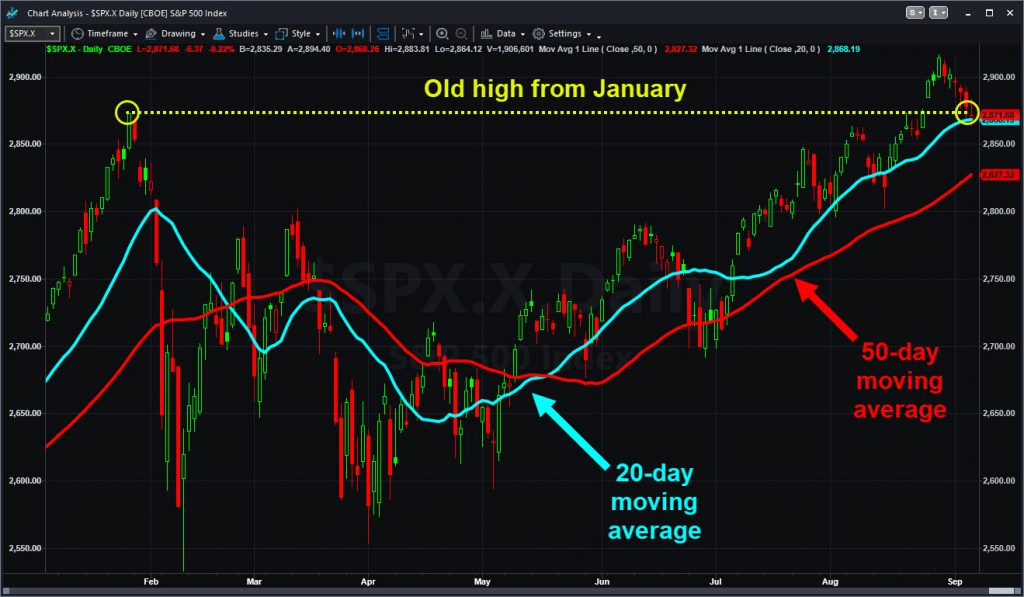Traders finally got a pullback last week, thanks to a mini-crash in technology.
The S&P 500 slid 1 percent in the holiday-shortened period between Friday, August 31, and Friday, September 7. But that was nothing compared to the Nasdaq-100, whose 2.8 percent slide represented the biggest weekly decline since late March. The Nasdaq’s volatility index ($VXN.X) rose twice as much as the broader fear index ($VIX.X).
Semiconductors and social media shouldered most of the blame, but an unusual number of personalities impacted sentiment as well. Case in point: Tesla Motors (CEO) lost two key executives as CEO Elon Musk seemed to use marijuana on video. About $7 billion of market cap went up in smoke.
Nike (NKE) swooned after hiring controversial quarterback Colin Kaepernick. JD.com (JD) cratered after its head honcho got arrested. There was also drama on Capitol Hill as Senators went head-to-head against tech executives.
And of course, you had President Trump’s threat to impose tariffs on an additional $267 billion of goods from China.

Despite all the angst, the S&P 500 managed to hold its range from late August and close near its previous record high from January 26. The question now facing investors is whether they’ll get a steeper pullback, or is this as good as it gets?
Some of the economic numbers were as good as they’d been for a long time. Initial jobless claims fell more than expected to their lowest reading since 1969. Manufacturing data from the Institute for Supply Management spiked to a 14-year high. A separate report showed wages rising at their quickest pace this decade. Job growth also surprised to the upside.
While most attention focused on the selling pressure in tech last week, the biggest drops occurred in energy and global stocks. The culprits were slowing growth in China and currency selloffs in places like South Africa, Argentina and India. Click here for more on what happens when the U.S. economy accelerates at the same time emerging markets struggle.
Safe havens like consumer staples and utilities fared the best, although industrials and transports also eked out small gains.
Micron Technology (MU) was the single-worst performer in the S&P 500 last week, sliding 15 percent on signs of price deterioration for its memory chips. (Remember, MU does lots of business in China.) Twitter (TWTR) was second-worst amid the broader collapse in high-profile Internet stocks like Facebook (FB) and Alphabet (GOOGL).
The biggest gainer was Ulta Salon (ULTA), lifted 17 percent on news of an exclusive cosmetics deal with Kylie Jenner. Advanced Micro Devices (AMD) came in second place, up 10 percent.
This coming week has a quieter agenda, but there could be more activity as market participants return from vacation.
The first big events come on Wednesday when Apple (AAPL) unveils new iPhones, the Energy Department reports oil inventories and the Federal Reserve releases its Beige Book survey of economic conditions. Producer prices are also due.
Thursday brings the consumer-price inflation index, a European Central Bank meeting and initial jobless claims. Kroger (KR) and Adobe Systems (ADBE) issue quarterly results.
The week concludes with monthly retail-sales data, industrial production and consumer sentiment on Friday morning.


























